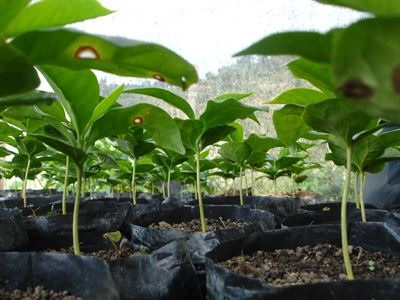Plant establishment
Definitions
To define a plant establishment, it must first be known what it is to establish something. Establish is defined as, "to found, institute, build, or bring into being on a firm or stable basis". [1] Based on that, a plant establishment can be defined as, "the act of a plant taking root within a soil where it can flourish".

Plant Establishment
When plants first colonize an area, they are limited by a number of factors including environmental conditions, seed availability or a lack of facilitating species. However, this phase is arguably the most critical part of ecosystem development. A seed has to be dispersed to an area and land on a suitable microsite while also at a time with favorable conditions for germination and early growth. This is remedied as time goes on because succession will continue, making the abiotic factors and species interactions, like competition, more favorable for colonizing plants. The more plants that become established in an area, the higher the quality of the soil becomes, which leads to a higher success rate of plant establishment. When the soil quality raises to a certain point, smaller seeds are able to establish themselves, adding competition to area, which makes the area even more suitable for other types of plants. The diversity will create many more microsites in which plants with contrasting resource requirements can establish themselves and coexist. [2] This increase in biodiversity is beneficial to the overall health of the ecosystem, and the area in general.
Physically harsh environments such as outwash plains, pumice deposits and other fresh volcanic surfaces, can be extremely limiting for plant establishment, but not impossible. In these types of areas, the soils are typically extremely infertile with very poor water holding capacity, the surface is potentially unstable, and is often exposed to wind or lacking in shelter. Any little advantage that a seed can get to survive will give it the chance to establish itself. These advantages include depressions and other concave surfaces, larger stones, rocks and already established plants. The depressions and concave surfaces may increase soil moisture, provide shelter from temperature extremes and winds, or trap seeds. The larger stones, rocks, and established plants can also create favorable conditions by reducing wind and direct solar exposure, thus lowering evaporation rates and moisture loss. [4]
References
[1] "establish". Dictionary.com Unabridged. Random House, Inc. 2 May. 2018. <Dictionary.com http://www.dictionary.com/browse/establish>.
[2] Marteinsdottir, Bryndis, et al. "Multiple mechanisms of early plant community assembly with stochasticity driving the process." Ecology, vol. 99, no. 1, 2018, p. 91+. General OneFile, http://link.galegroup.com/apps/doc/A532385328/GPS?u=avlr&sid=GPS&xid=5153d942. Accessed 2 May 2018.
[3] “Plants, Types, Growing Areas.” Plants, Types, Growing Areas - The Coffee Plant - Coffea Arabica - Coffea Caneph / Dethlefsen & Balk - Tea, Coffee, Confiserie, Accessories, www.dethlefsen-balk.de/ENU/10889/Coffee_Plant.html.
[4] Marteinsdottir, Bryndis, et al. "An experimental test of the relationship between small scale topography and seedling establishment in primary succession." Plant Ecology, vol. 214, no. 8, 2013, p. 1007+. Gardening,Landscape and Horticulture Collection, http://link.galegroup.com/apps/doc/A344602188/GPS?u=avlr&sid=GPS&xid=d12f9d06. Accessed 3 May 2018.